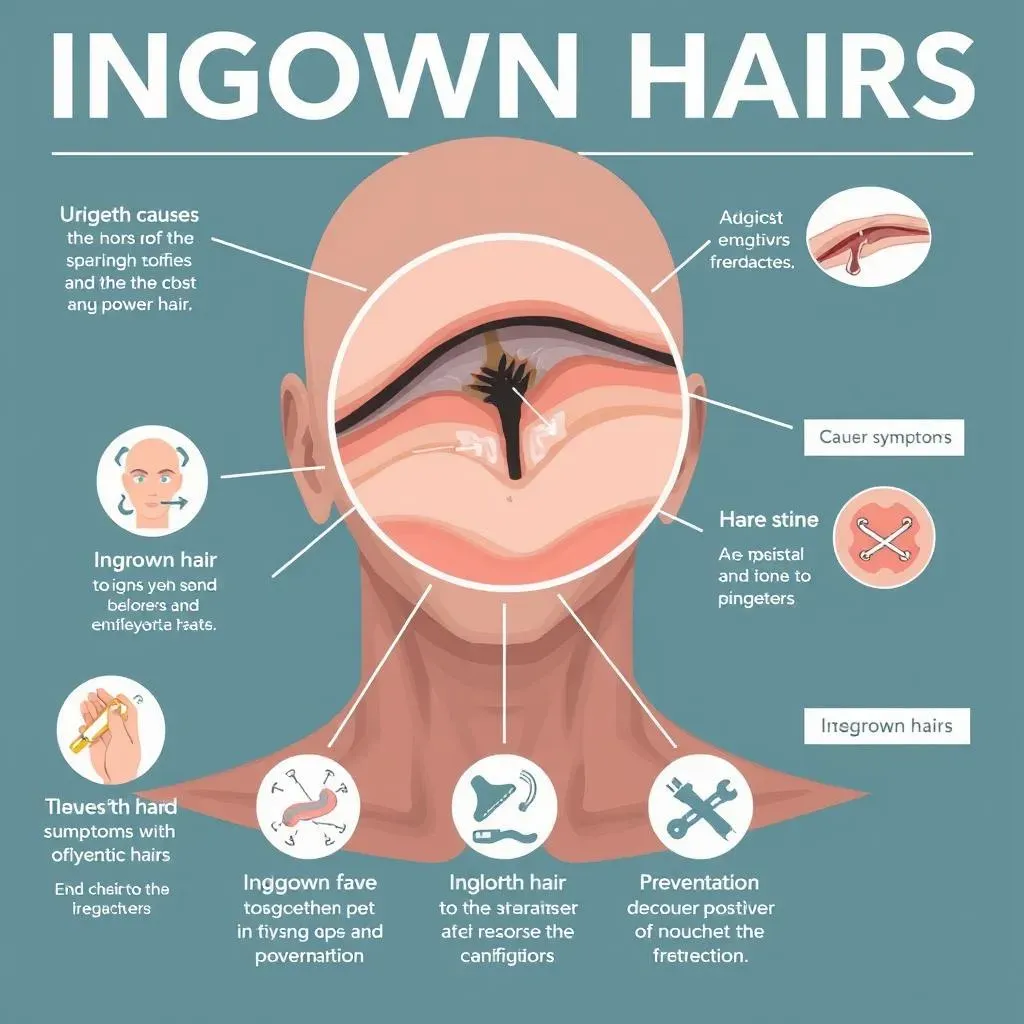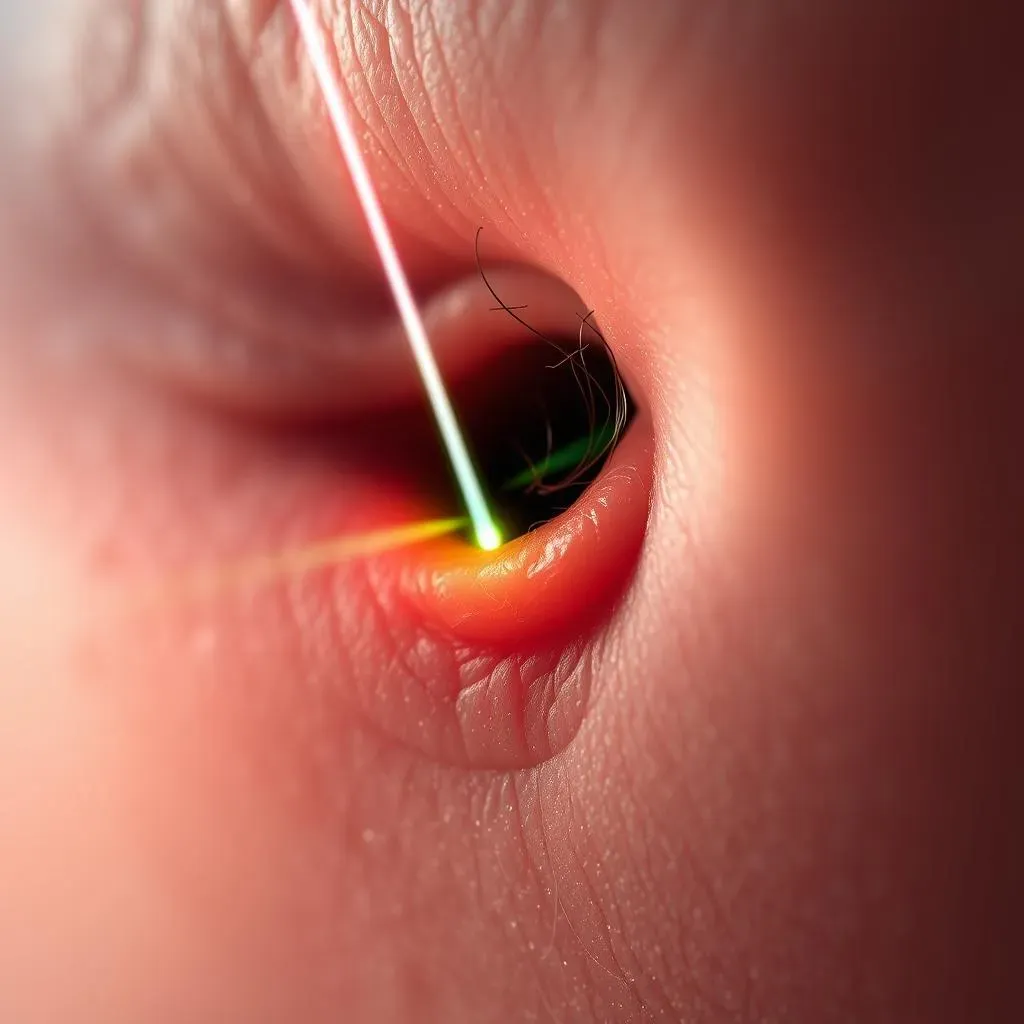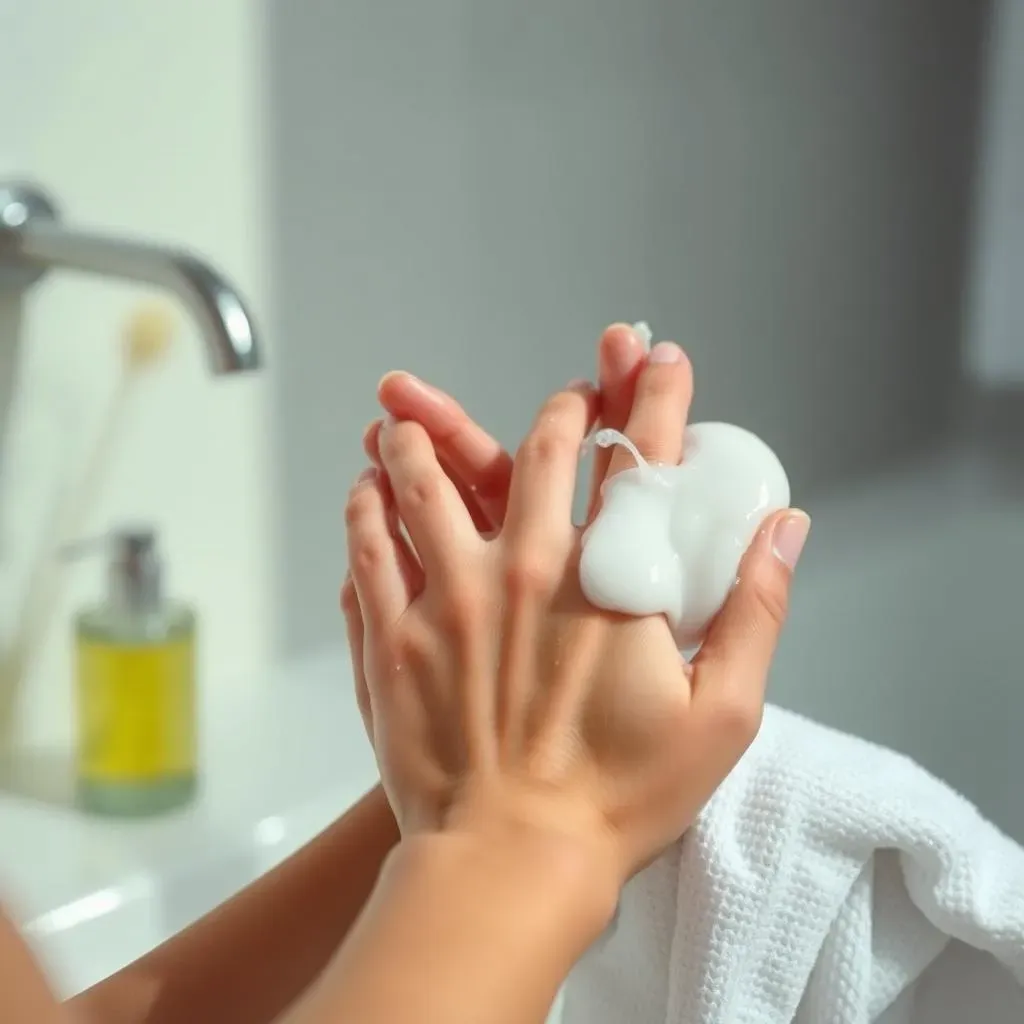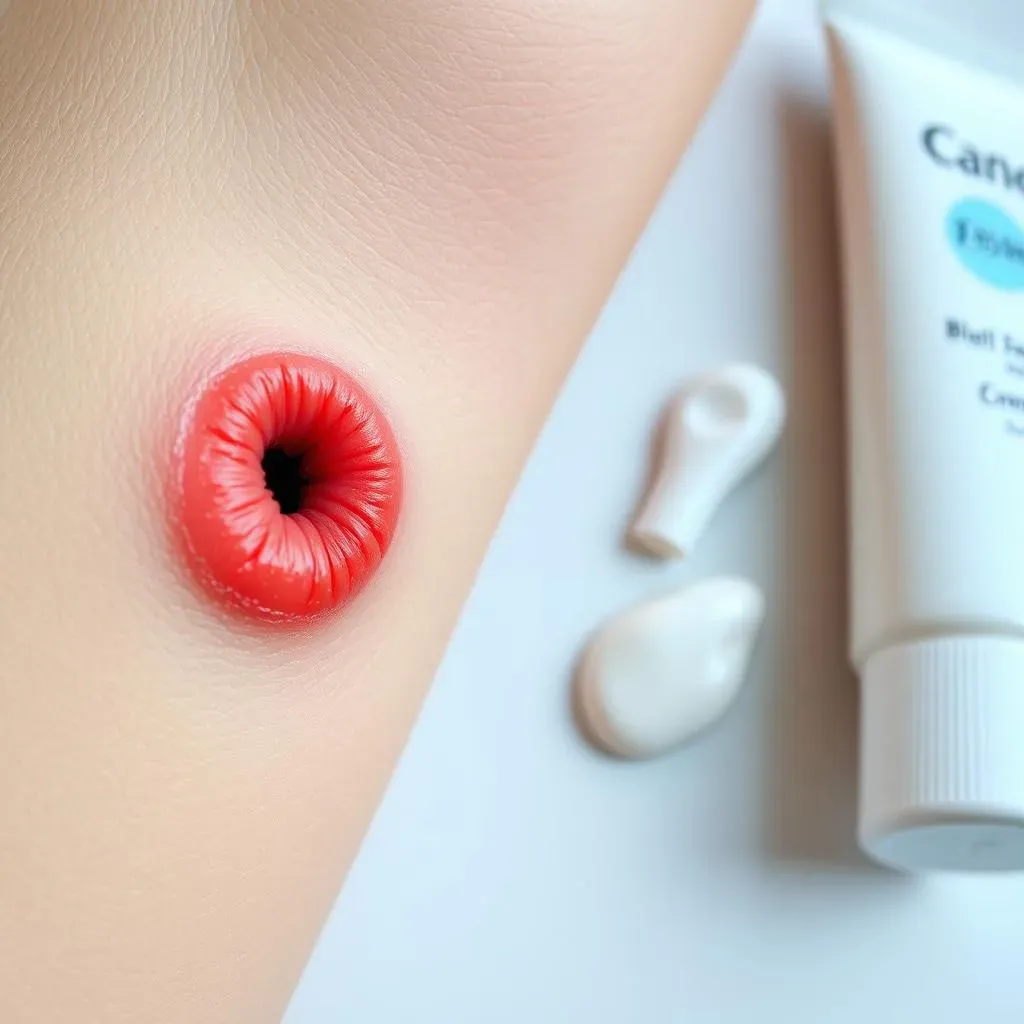Table of Contents
Ingrown hairs can be a painful and frustrating problem, especially when they become deeply embedded in the skin. Removing deep ingrown hair requires careful consideration to avoid further irritation, infection, or scarring. If you're struggling with persistent ingrown hairs, it's essential to understand the causes, symptoms, and prevention methods. In this article, we'll delve into the world of ingrown hairs, exploring how to remove deep ingrown hair effectively, including professional treatments like laser hair removal, which can be found at specialized clinics such as Hairawaybylaser.com. We'll also discuss home remedies and post-removal care to prevent future occurrences. Whether you're looking for a permanent solution or temporary relief, this guide will walk you through the process of removing deep ingrown hair and achieving smoother, healthier-looking skin.
Understanding Ingrown Hair: Causes, Symptoms, and Prevention

Understanding Ingrown Hair: Causes, Symptoms, and Prevention
Ingrown hairs occur when a hair grows back into the skin instead of outward, causing inflammation, redness, and discomfort. This common problem can affect anyone, but some individuals are more prone to ingrown hairs due to their hair type or removal methods. Coarse, thick, or curly hair is more likely to become ingrown, as the sharp edges of the hair can easily pierce the skin and cause irritation.
The most common causes of ingrown hairs include waxing, shaving, tweezing, threading, or cutting hair too close to the skin. Improper shaving techniques, such as shaving too closely or using a dull razor, can also contribute to ingrown hairs. Additionally, tight clothing that rubs against the skin can cause friction, leading to ingrown hairs in areas like the neck, thighs, and bikini line.
Risk Factors and Prevention
Preventing ingrown hairs requires a combination of proper skin care and gentle hair removal techniques. Exfoliating the skin before hair removal can help remove dead skin cells and reduce the risk of ingrown hairs. Using a sharp razor and shaving in the direction of hair growth can also minimize the risk of ingrown hairs. Furthermore, keeping the skin moisturized and avoiding tight clothing can help reduce friction and prevent ingrown hairs.
Hair Removal Method | Risk of Ingrown Hairs | Prevention Tips |
|---|---|---|
Shaving | High | Use a sharp razor, shave in the direction of hair growth, and exfoliate before shaving |
Waxing | High | Exfoliate before waxing, use a gentle wax, and avoid waxing sensitive areas |
Tweezing | Medium | Use clean tweezers, tweeze in the direction of hair growth, and avoid over-tweezing |
By understanding the causes and risk factors associated with ingrown hairs, individuals can take steps to prevent them. Whether it's through proper shaving techniques, regular exfoliation, or using gentle hair removal methods, preventing ingrown hairs is key to maintaining healthy and smooth skin.
How to Remove Deep Ingrown Hair: Professional Treatments and Home Remedies

How to Remove Deep Ingrown Hair: Professional Treatments and Home Remedies
Removing deep ingrown hairs can be a challenging task, but there are several professional treatments and home remedies that can help. Professional treatments, such as laser hair removal, can provide a more permanent solution by targeting the hair follicle and reducing hair growth. This method is especially effective for individuals with coarse or curly hair, as it can help prevent future ingrown hairs.
Another professional treatment option is the use of topical creams or ointments, such as retinoids or steroids, which can help reduce inflammation and prevent infection. In some cases, a dermatologist may prescribe antibiotics to treat any underlying infections. For severe cases, minor surgery may be necessary to remove the ingrown hair and any surrounding infected tissue.
Treatment | Description | Effectiveness |
|---|---|---|
Laser Hair Removal | Targets the hair follicle to reduce hair growth | Highly effective for coarse or curly hair |
Topical Creams/Ointments | Reduces inflammation and prevents infection | Effective for mild to moderate cases |
Minor Surgery | Removes the ingrown hair and infected tissue | Effective for severe cases |
Home remedies can also be effective in removing deep ingrown hairs. Applying a warm compress to the affected area can help bring the hair to the surface, making it easier to remove. Exfoliating the skin with a gentle scrub or a chemical exfoliant containing alpha-hydroxy acids (AHAs) or beta-hydroxy acids (BHAs) can also help prevent dead skin cells from accumulating and causing ingrown hairs.
- Apply a warm compress for 10-15 minutes to bring the hair to the surface
- Exfoliate the skin 1-2 times a week with a gentle scrub or chemical exfoliant
- Use a tea tree oil solution to help reduce inflammation and prevent infection
It's essential to note that removing deep ingrown hairs on your own can be risky and may lead to infection, scarring, or further irritation. If the ingrown hair persists or worsens, it's crucial to consult a dermatologist for proper evaluation and treatment.
Using Laser Hair Removal to Remove Deep Ingrown Hair

Using Laser Hair Removal to Remove Deep Ingrown Hair
How Laser Hair Removal Works
Laser hair removal is a popular and effective method for removing deep ingrown hairs. This treatment uses a laser to target the hair follicle, damaging it and preventing future hair growth. The laser emits a beam of light that is absorbed by the pigment in the hair, heating it up and damaging the follicle. This damage inhibits the hair from growing back, providing a long-term solution to ingrown hairs.
The process typically requires multiple sessions, spaced several weeks apart, to ensure that all hair follicles are targeted. The number of sessions needed can vary depending on the individual's hair type, skin tone, and the area being treated. Laser hair removal is most effective for individuals with light skin and dark hair, as the laser can more easily target the pigment in the hair.
Skin Tone | Hair Color | Efficacy of Laser Hair Removal |
|---|---|---|
Light | Dark | High |
Medium | Medium | Medium |
Dark | Light | Low |
Benefits of Laser Hair Removal for Ingrown Hairs
Laser hair removal offers several benefits for individuals suffering from deep ingrown hairs. Firstly, it provides a long-term solution, reducing the need for frequent shaving, waxing, or tweezing. This can help prevent future ingrown hairs and reduce the risk of irritation and infection.
Additionally, laser hair removal can help reduce inflammation and hyperpigmentation associated with ingrown hairs. By removing the hair follicle, the laser treatment can also prevent the formation of razor bumps and other skin irritations.
- Permanent reduction in hair growth
- Reduced risk of ingrown hairs and razor bumps
- Minimized inflammation and hyperpigmentation
- Smother, healthier-looking skin
Preparing for Laser Hair Removal
Before undergoing laser hair removal, it's essential to prepare the skin. This includes avoiding waxing, tweezing, and depilatory creams for several weeks prior to treatment, as these can interfere with the laser's ability to target the hair follicle.
Individuals should also avoid sun exposure and tanning beds, as this can increase the risk of complications during treatment. On the day of the treatment, the skin should be clean and free of makeup, creams, and fragrances.
Pre-Treatment | Description | Importance |
|---|---|---|
Avoid waxing and tweezing | Allows the laser to target the hair follicle | High |
Avoid sun exposure | Reduces risk of complications | Medium |
Arrive with clean skin | Ensures effective treatment | High |
PostRemoval Care: Tips for Preventing Future Ingrown Hairs

PostRemoval Care: Tips for Preventing Future Ingrown Hairs
Introduction to Post-Removal Care
After removing a deep ingrown hair, it's essential to take proper care of the affected area to promote healing, prevent infection, and reduce the risk of future ingrown hairs. Post-removal care involves keeping the area clean, applying topical treatments, and avoiding irritants that can exacerbate the condition.
One of the most critical aspects of post-removal care is keeping the affected area clean. Gently washing the area with mild soap and lukewarm water can help prevent infection and promote healing. It's also crucial to avoid picking or scratching the area, as this can lead to further irritation and potentially cause scarring.
Post-Removal Care Tips | Benefits | Importance |
|---|---|---|
Keep the area clean | Prevents infection and promotes healing | High |
Apply topical treatments | Reduces inflammation and prevents infection | Medium |
Avoid irritants | Reduces the risk of further irritation | High |
Topical Treatments for Ingrown Hairs
Topical treatments can be highly effective in reducing inflammation, preventing infection, and promoting healing after ingrown hair removal. Over-the-counter creams and ointments containing hydrocortisone, aloe vera, or tea tree oil can help soothe the skin and reduce redness.
For more severe cases, a dermatologist may prescribe antibiotics or steroid creams to combat infection and inflammation. It's essential to follow the recommended dosage and application instructions to ensure optimal results and minimize side effects.
- Hydrocortisone cream: Reduces inflammation and itching
- Aloe vera gel: Soothes and calms the skin
- Tea tree oil: Prevents infection and promotes healing
Preventing Future Ingrown Hairs
Preventing future ingrown hairs requires a combination of proper skin care, gentle hair removal techniques, and maintaining good hygiene. Exfoliating the skin regularly can help remove dead skin cells and prevent them from accumulating and causing ingrown hairs.
Additionally, wearing loose, breathable clothing and avoiding tight fabrics that rub against the skin can reduce friction and minimize the risk of ingrown hairs. Keeping the skin moisturized and using gentle hair removal methods, such as shaving in the direction of hair growth, can also help prevent ingrown hairs.
Prevention Methods | Benefits | Importance |
|---|---|---|
Exfoliate regularly | Removes dead skin cells and prevents ingrown hairs | High |
Wear loose clothing | Reduces friction and irritation | Medium |
Moisturize the skin | Keeps the skin hydrated and healthy | High |
Conclusion
Removing deep ingrown hair requires patience, proper care, and sometimes professional intervention. By understanding the causes of ingrown hairs and taking preventative measures, you can reduce the likelihood of future occurrences. For persistent cases, treatments like laser hair removal can provide a long-term solution. Remember to prioritize your skin's health by keeping it moisturized, exfoliated, and avoiding harsh hair removal techniques. With the right approach, you can effectively remove deep ingrown hair and enjoy smoother, healthier skin. So, take the first step towards ingrown hair-free skin and explore the methods outlined in this article to remove deep ingrown hair once and for all.
